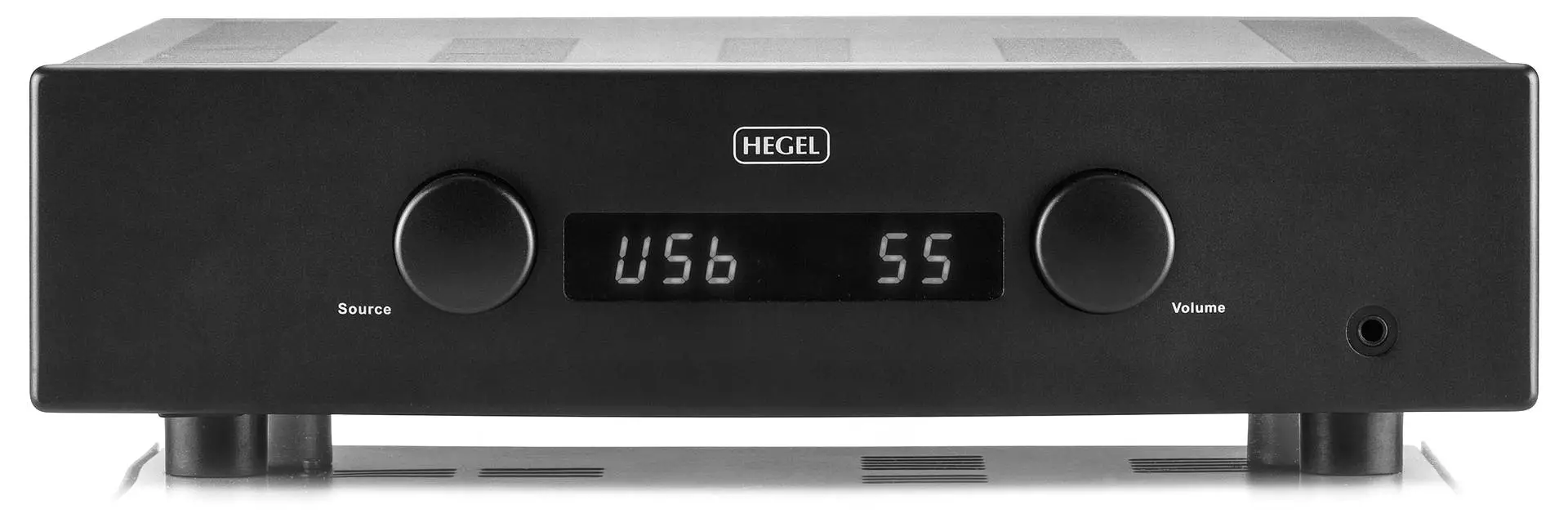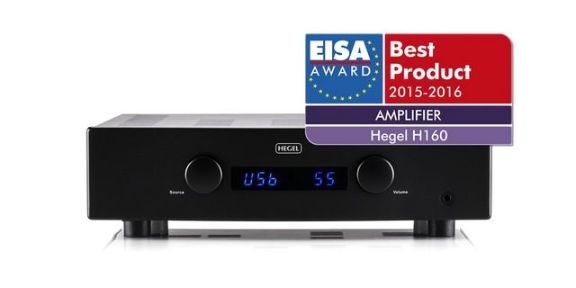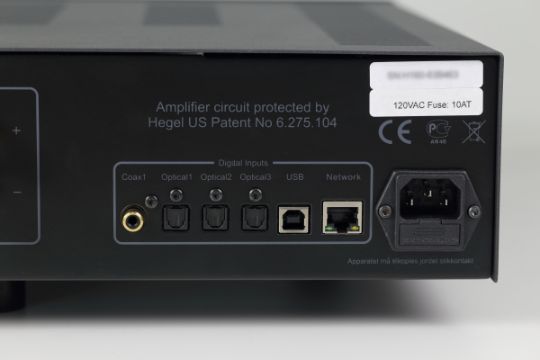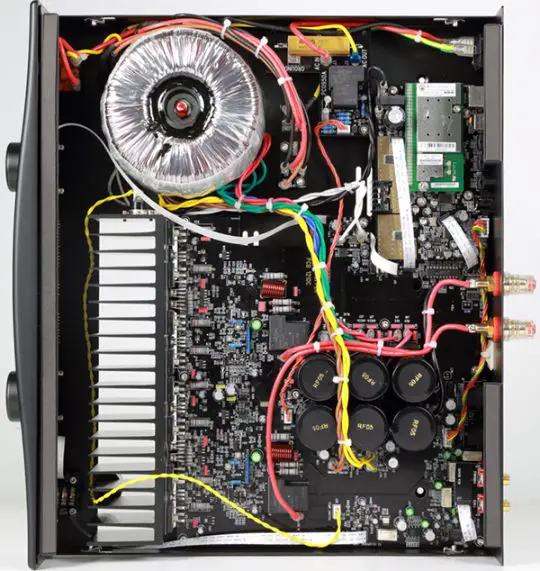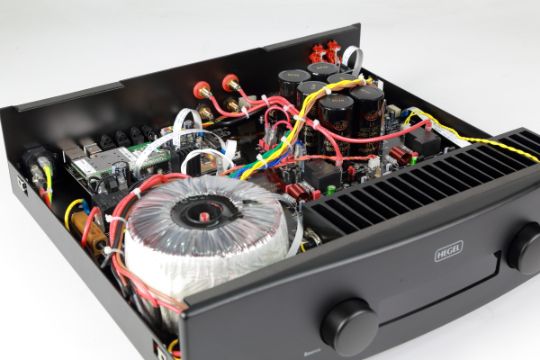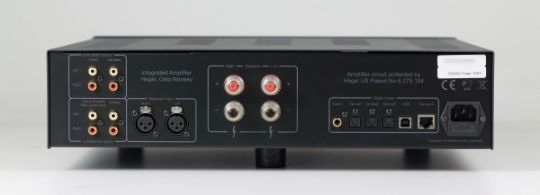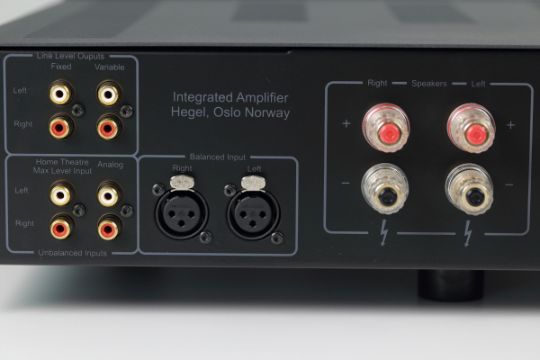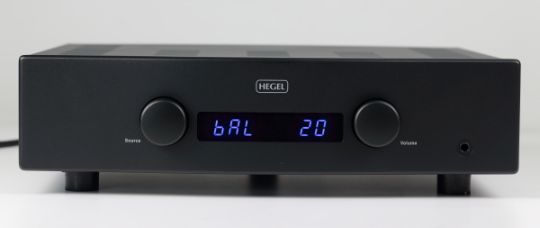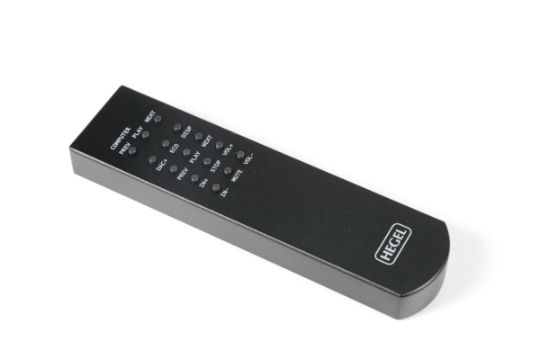Hegel H160 Review
Hegel H160 has won the EISA European Audiovisual Association 2015-2016 Best Amplifier Award. To know that EISA’s best amplifier is awarded only once a year (EISA also has an annual Hi-End amplifier award), it is really not easy to win this award.
Design
For the Hegel H160 integrated amplifier, to get so many professional media’s excellent recommend, first of all, two conditions must be met. One is that the function must be complete, and the other is that the cost-effectiveness must be high. H160 meets both items. H160 is robust and provides efficient 150 watts × 2 channel power. Moreover, it is effortless to drive different kinds of speakers.
Hegel H160 amplifier is an integrated amplifier. In addition to traditional analog inputs (balanced and unbalanced), various digital inputs are readily available and even include DLNA/UPnP functions. H160 provides 1 RCA coaxial input and three optical inputs, which can be connected to sources such as CD turntables, Blu-ray players, game consoles, and digital set-top boxes.
It also has a type B USB input, so it’s no problem to use a Mac or Windows computer as a source. In addition, Hegel H160 can support up to 24bit/192kHz sampling rate.
The most convenient is that there is an RJ45 network cable jacks on the back of H160. After connecting to the network, H160 is a network streaming player. It can directly play music files stored in NAS or computer, and users only need to download a remote control app like BubbleUPnP, and you can operate it wirelessly via a mobile phone or tablet.
If I want to play music on my phone wirelessly, can H160 do it? The answer is yes, but you must use an iPhone or iPad portable device. Hegel H160 supports Apple’s AirPlay function. As long as you connect H160 to a wireless router with a network cable, you will find H160 on the Apple device’s AirPlay speakers list, and then you can play the music files wirelessly.
Internal Circuit Design
Next, I will explain the internal circuit of the machine. After music file decoding and digital audio input, AKM AK4127VF (192kHz/24bit SRC) is used for the up-sampling processing in the digital conversion circuit to make the final audio signal better linearity, and keeping the digital noise away from the audio, effectively reduce noise.
Then the AKM high-end DAC chip AK4396 is used for digital conversion. Finally, the audio signal output by the DAG chip is passed through the NE5532 (low-noise dual OPA chip) and passive components to form a low-pass filter circuit. The above is the digital source part in H160.
In the pre-amplification circuit part, this machine uses JRC NJW1159 for volume control. This audio control chip feature is no voltage gain, only signal attenuation and buffer. Most audio control chips have voltage gain, and Hegel chose this module to maintain greater dominance in the design of the amplifying circuit.
The main amplifying component of the high-level amplifying circuit uses JRG NJM4556AD. This component has low noise, broadband, and high slew rate characteristics.
Power amplifier circuits have always been Hegel’s strength. The designer Bent Holter developed a patented technology called “Multistage amplifier with local error correction” in the early 1990s. The error of the output signal is detected at the output of each amplifier stage, and the front-end circuit is combined with the front end of the amplifier stage to make real-time corrections. That is what Hegel later called “SoundEngine” technology.
This method can effectively solve the problems of crossover distortion so that harmonic distortion is extremely low, especially high-frequency harmonic distortion. Hegel has been applying this patented technology that they are pretty proud of since its inception, and H160 is no exception.
Hegel H160’s power amplifier circuit has a low distortion rate and a sizeable current matching design. Each channel uses two pairs of Toshiba 2SA2121/2SC5949 push-pull outputs with 15-ampere current output capability. A heavyweight toroidal transformer powers the power circuit. After rectification, it uses six 10,000μF Nover audio special electrolytic capacitors for filtering.
Rich Interfaces
H160 has powerful DAC and DLNA/UPnP functions and pays attention to users using traditional input sources. In addition to RCA single-ended input, it also provides an XLR balanced input and a theater RCA input. That is, the signal does not pass through the volume control module, allowing H160 to be integrated into a multi-channel theater system at home.
Hegel H160 also provides 2 RCA outputs, one of which is with fixed volume and the other is with variable volume, meaning that the H160 can also be used as a DAC.
H160 can be connected to various sources, but I only plan to use the most straightforward configuration for the listening test. So first, I will connect the H160 to the Internet and use its DLNA/UPnP function to play music files stored in the NAS.
After the wire was connected, I was about to turn on the machine, but I couldn’t find the power switch of the Hegel H160 at this time. Except for the volume and source selection knob, nothing else can be found. There are no switches beside the power socket on the back panel. It turns out that the H160’s power switch is hidden on the bottom left side near the panel. You can find it by your fingers in and touching it.
There are usually two reasons for this design: aesthetics and the other because the equipment does not need to be shut down. I think the H160 is considered. H160 hides the switch underneath, maintaining the simplicity of the panel, and you do not need to reach behind the equipment when turning on/off, providing the convenience of use.
The DLNA playback function of H160 allows users to pick up the mobile phone to play remotely. If you need to use the amplifier’s remote control to turn on the power, you have to press the amplifier’s power switch. Therefore, it is quite reasonable to keep the H160 on. Moreover, I did not turn off the H160 for several days.
The Hegel H160 integrated amplifier is held in a low-temperature state, and there is no any overheating when listening for a long time. Therefore, it can be seen that there should be no problem without turning off the phone.
App Control Feature
To play with DLNA, you must have a remote control app. I use Bubble UPnP. It has a free version for Android, and the limitation is that the playlist can only add up to 16 songs, but it’s pretty enough. After downloading and opening the BubbleUPnP app, you should see the H160 amplifier. You can select the H160 for the music playing.
When playing, I also found that the volume of the app is linked to the H160. That is to say, when you use the H160’s remote control to adjust the volume, the volume of the app will follow. Conversely, if you use the app to adjust the volume, the volume number displayed on the H160 panel will also change. Therefore, the app control is really convenient.
However, Hegel H160 has one place that I think is a little inconvenient: source switching. In addition to the volume, there is only one source knob on its panel, so when switching sources, the knob must be rotated. But because there are many gears, it has to be turned many times.
So wouldn’t it be enough to use the remote control? Wrong, the source switching on the H160 remote control is also up and down, so you have to switch around the input sources step by step.
During the audition, apart from playing with DLNA, I also tried the analog input, which was paired with the Japanese SPEC flagship source RMP-X3EX streaming player. In comparison, I think it sounds the most suitable to use H160’s DLNA function. The H160 is originally a very thick sound amplifier. If you add a thicker source, the sound becomes less flexible, and it is not as good as the H160’s DLNA.
Sound Performance
From the things mentioned above, we can guess how thick the sound of H160 is! That’s right. That is also the attraction of Hegel H160. It not only has a good sound thickness but also has a concentrated and entire sound field. The sound image is quite large. Therefore, the sound field seems to be filled with rich music rhythm, which is easy to listen to and easy to listen to.
Listen to “Bruckner’s No. 8 Symphony” . It is not cramped when the volume is loud, which shows that the driving force is indeed good. Moreover, the loudspeaker is placed far away from the back wall. At this time, the H160 sound field is far-reaching, clear, and rich in layers, and it is very suitable for playing a symphony.
It is also a great pleasure to listen to rhythmic jazz with H160, such as Shirley Horn’s “Yes, I know when I’ve had it”. H160’s bounce and round low-frequency performance can show a relaxed and happy, dynamic and straightforward music atmosphere, which sounds kind and sweet, without pressure.
The point is that not only does H160 sound stress-free, it also makes it easy for you to build a listening system. Perhaps its price is not cheap in terms of a single piece of equipment, but as a fully functional, versatile integrated amplifier with DAC, network streaming, and even a headphone jack, making it accommodate all the home sources is worth every penny.
Conclusion
H160 has made the best fusion of power and beauty. With speakers that can extend excellent high-frequency characteristics, Hegel can definitely deliver the details. If the loudspeaker’s mid-low frequency is accurate enough, Hegel H160 can bring a great shock. The fine-tuning on the wire also needs to find the appropriateness, and the final result is quite gorgeous, which will definitely make you have an unforgettable listening experience.
Hegel H160 Specifications
- Power output spk: 150 w/pc into 8 Ohms, 250 w/pc into 4 Ohms
- Power output hp: 270 mw/pc into 64 Ohms
- Analog inputs: 1 balanced (XLR), 1 unbalanced (RCA), 1 home theatre
- Analog outputs: 1 fixed line level (RCA), 1 variable line level (RCA)
- Digital inputs: 1 coaxial, 3 optical, 1 USB, 1 ethernet (RJ45)
- Headphone output: 6.3 mm Jack (front)
- Frequency response: 5Hz-100kHz
- Signal-to-noise ratio: More than 100dB
- Crosstalk: Less than -100dB
- Distortion: 0.005% @ 50W 8 Ohms 1kHz
- Intermodulation: Less than 0.01% (19kHz + 20kHz)
- Damping factor: More than 1000 (main power output stage)
- Dimensions/weight: 12cm x 43cm x 41cm (HxWxD)/19kg (shipping)
- Dimensions/weight: 4.7″ x 16.93″ x 16.15″ (HxBxD)/42lbs (shipping)
